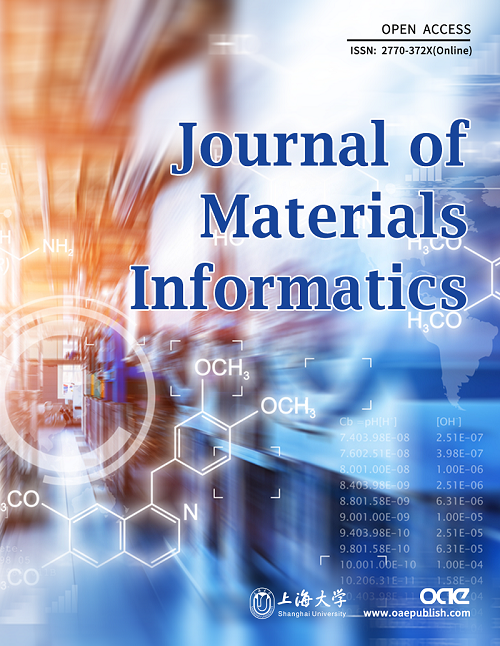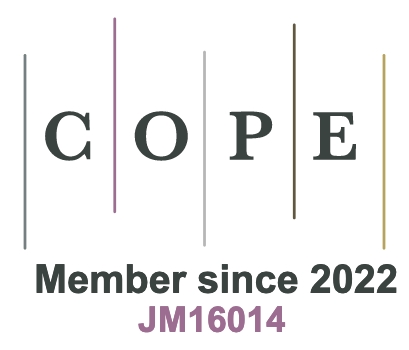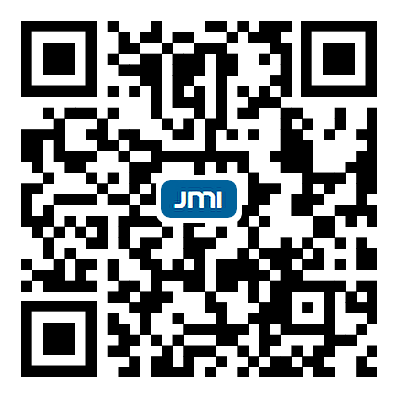REFERENCES
1. Opeka MM, Talmy IG, Zaykoski JA. Oxidation-based materials selection for 2000 °C + hypersonic aerosurfaces: theoretical considerations and historical experience. J Mater Sci 2004;39:5887-904.
2. Fahrenholtz WG, Hilmas GE, Talmy IG, Zaykoski JA. Refractory diborides of zirconium and hafnium. J Am Ceram Soc 2007;90:1347-64.
3. Ni D, Cheng Y, Zhang J, et al. Advances in ultra-high temperature ceramics, composites, and coatings. J Adv Ceram 2022;11:1-56.
4. Zou J, Zhang GJ, Hu CF, et al. Strong ZrB2-SiC-WC ceramics at 1600 °C. J Am Ceram Soc 2012;95:874-8.
5. Wang Y, Wen B, Jiao X, et al. The highest melting point material: searched by Bayesian global optimization with deep potential molecular dynamics. J Adv Ceram 2023;12:803-14.
6. Ma HB, Man ZY, Liu JX, Xu FF, Zhang GJ. Microstructures, solid solution formation and high-temperature mechanical properties of ZrB2 ceramics doped with 5vol.% WC. Mater Design 2015;81:133-40.
7. Silvestroni L, Gilli N, Migliori A, et al. A simple route to fabricate strong boride hierarchical composites for use at ultra-high temperature. Compos Part B Eng 2020;183:107618.
8. Silvestroni L, Failla S, Vinokurov V, Neshpor I, Grigoriev O. Core-shell structure: an effective feature for strengthening ZrB2 ceramics. Scr Mater 2019;160:1-4.
9. Silvestroni L, Mungiguerra S, Sciti D, Di Martino GD, Savino R. Effect of hypersonic flow chemical composition on the oxidation behavior of a super-strong UHTC. Corros Sci 2019;159:108125.
10. Chen H, Xiang H, Dai FZ, Liu J, Zhou Y. Porous high entropy (Zr0.2Hf0.2Ti0.2Nb0.2Ta0.2)B2: a novel strategy towards making ultrahigh temperature ceramics thermal insulating. J Mater Sci Technol 2019;35:2404-8.
11. Li RZ, Wang XG, Yuan JH, et al. Enhanced high-temperature strength in textured (Ti1/3Zr1/3Hf1/3)B2 medium-entropy ceramics via strong magnetic field. J Am Ceram Soc 2023;106:5440-53.
12. Yang QQ, Wang XG, Wu P, et al. Ultra-high strength medium-entropy (Ti,Zr,Ta)C ceramics at 1800 °C by consolidating a core-shell structured powder. J Am Ceram Soc 2022;105:823-9.
13. Feng L, Chen WT, Fahrenholtz WG, Hilmas GE. Strength of single-phase high-entropy carbide ceramics up to 2300 °C. J Am Ceram Soc 2021;104:419-27.
14. Gild J, Zhang Y, Harrington T, et al. High-entropy metal diborides: a new class of high-entropy materials and a new type of ultrahigh temperature ceramics. Sci Rep 2016;6:37946.
15. Xiang H, Xing Y, Dai F, et al. High-entropy ceramics: present status, challenges, and a look forward. J Adv Ceram 2021;10:385-441.
16. Wen Z, Tang Z, Liu Y, Zhuang L, Yu H, Chu Y. Ultrastrong and high thermal insulating porous high-entropy ceramics up to 2000 °C. Adv Mater 2024;36:e2311870.
17. Zhang L, Han J, Wang H, Car R, Weinan E. Deep potential molecular dynamics: a scalable model with the accuracy of quantum mechanics. Phys Rev Lett 2018;120:143001.
18. Behler J, Parrinello M. Generalized neural-network representation of high-dimensional potential-energy surfaces. Phys Rev Lett 2007;98:146401.
19. Bartók AP, Payne MC, Kondor R, Csányi G. Gaussian approximation potentials: the accuracy of quantum mechanics, without the electrons. Phys Rev Lett 2010;104:136403.
20. Deng B, Zhong P, Jun K, et al. CHGNet as a pretrained universal neural network potential for charge-informed atomistic modelling. Nat Mach Intell 2023;5:1031-41.
21. Takamoto S, Shinagawa C, Motoki D, et al. Towards universal neural network potential for material discovery applicable to arbitrary combination of 45 elements. Nat Commun 2022;13:2991.
22. Chen C, Ong SP. A universal graph deep learning interatomic potential for the periodic table. Nat Comput Sci 2022;2:718-28.
23. Dai FZ, Wen B, Sun Y, Xiang H, Zhou Y. Theoretical prediction on thermal and mechanical properties of high entropy
24. Dai FZ, Sun Y, Wen B, Xiang H, Zhou Y. Temperature dependent thermal and elastic properties of high entropy
25. Dai FZ, Wen B, Sun Y, Ren Y, Xiang H, Zhou Y. Grain boundary segregation induced strong UHTCs at elevated temperatures: a universal mechanism from conventional UHTCs to high entropy UHTCs. J Mater Sci Technol 2022;123:26-33.
26. Dai FZ, Wen B, Xiang H, Zhou Y. Grain boundary strengthening in ZrB2 by segregation of W: atomistic simulations with deep learning potential. J Eur Ceram Soc 2020;40:5029-36.
27. Zhang D, Liu X, Zhang X, et al. DPA-2: towards a universal large atomic model for molecular and material simulation. arXiv. [Preprint.] Dec 24, 2023 [accessed 2024 Aug 8]. Available from: https://arxiv.org/abs/2312.15492.
28. Zhang D, Bi H, Dai FZ, et al. Pretraining of attention-based deep learning potential model for molecular simulation. npj Comput Mater 2024;10:94.
29. Zhang L, Lin DY, Wang H, Car R, Weinan E. Active learning of uniformly accurate interatomic potentials for materials simulation. Phys Rev Mater 2019;3:023804.
30. Kresse G, Furthmüller J. Efficiency of ab-initio total energy calculations for metals and semiconductors using a plane-wave basis set. Comput Mater Sci 1996;6:15-50.
32. Perdew JP, Burke K, Ernzerhof M. Generalized gradient approximation made simple. Phys Rev Lett 1996;77:3865-8.
33. Pack JD, Monkhorst HJ. “Special points for Brillouin-zone integrations” - a reply. Phys Rev B 1977;16:1748-9.
34. Wang H, Zhang L, Han J, Weinan E. DeePMD-kit: a deep learning package for many-body potential energy representation and molecular dynamics. Comput Phys Commun 2018;228:178-84.
35. Zeng J, Zhang D, Lu D, et al. DeePMD-kit v2: a software package for deep potential models. J Chem Phys 2023;159:054801.
36. Plimpton S. Fast parallel algorithms for short-range molecular dynamics. J Comput Phys 1995;117:1-19.
37. Ma HB, Zhang GJ, Liu HL, Liu JX, Lu Y, Xu FF. Effect of WC or ZrC addition on thermal residual stresses in ZrB2-SiC ceramics. Mater Design 2016;110:340-5.
38. Ruby E, Windsch, Chang Y. Ternary phase equilibria in transition metal-boron-carbon-silicon systems. Available from: https://www.semanticscholar.org/paper/Ternary-phase-equilibria-in-transition-systems-Ruby-Windsch/2d30dae05430ca0696e725f9a05b98aa47a02e88. [Last accessed on 8 Aug 2024].
39. Ma HB, Zou J, Zhu JT, Liu LF, Zhang GJ. Segregation of tungsten atoms at ZrB2 grain boundaries in strong ZrB2-SiC-WC ceramics. Scr Mater 2018;157:76-80.
40. Su W, Chen L, Zhang W, Huo S, Wang Y, Zhou Y. Insights into grain boundary segregation and solubility limit of Cr in (TiZrNbTaCr)C. J Mater Sci Technol 2023;139:1-9.
41. Su W, Chen L, Huo S, Zhang W, Wang Y, Zhou Y. Fracture mode transition from intergranular to transgranular in (TiZrNbTaCr)C: the grain boundary purification effect of Cr carbide. J Eur Ceram Soc 2024;44:1881-9.
42. Dai FZ, Zhou Y, Sun W. Segregation of solute atoms (Y, Nb, Ta, Mo and W) in ZrB2 grain boundaries and their effects on grain boundary strengths: a first-principles investigation. Acta Mater 2017;127:312-8.
43. Silvestroni L, Kleebe HJ, Fahrenholtz WG, Watts J. Super-strong materials for temperatures exceeding 2000 °C. Sci Rep 2017;7:40730.
44. Mo P, Li C, Zhao D, et al. Accurate and efficient molecular dynamics based on machine learning and non von Neumann architecture. npj Comput Mater 2022;8:107.
45. Jain A, Ong SP, Hautier G, et al. Commentary: the materials project: a materials genome approach to accelerating materials innovation. APL Mater 2013;1:011002.
46. Curtarolo S, Setyawan W, Wang S, et al. AFLOWLIB.ORG: a distributed materials properties repository from high-throughput ab initio calculations. Comput Mater Sci 2012;58:227-35.








